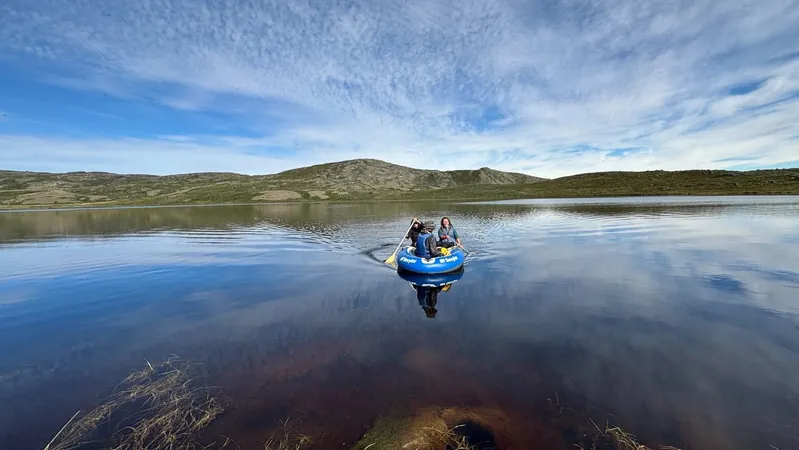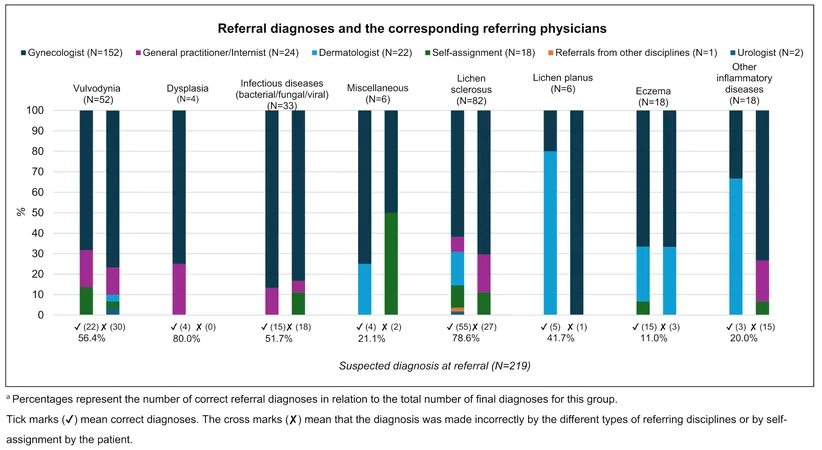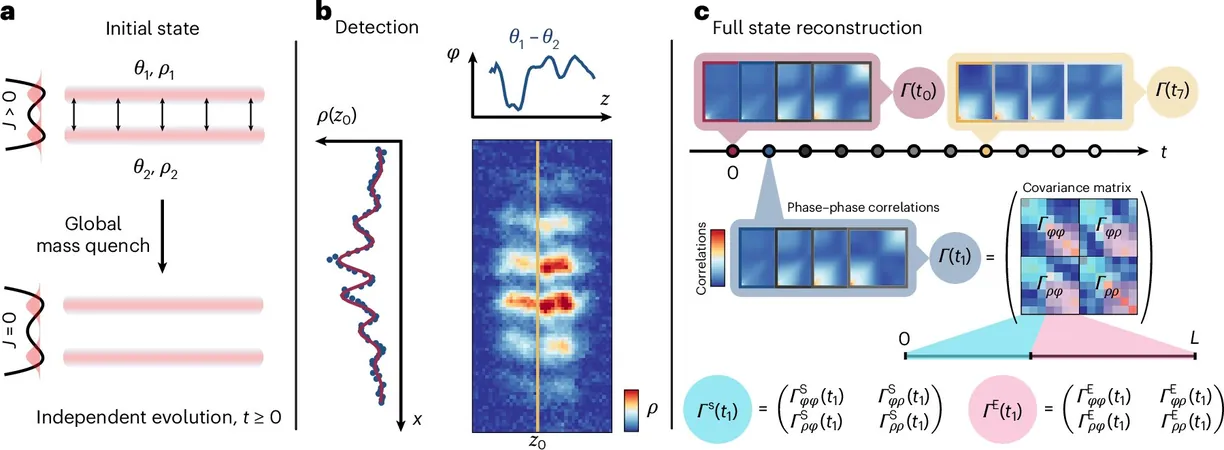
Alarming Climate Shift Turns Thousands of Lakes in West Greenland Brown: A Study Warns of Unprecedented Changes!
2025-01-21
Author: John Tan
Overview
A new study has revealed shocking transformations in West Greenland, where climatic extremes have spurred a dramatic shift in the region's signature blue lakes, previously vital for local drinking water and carbon absorption. Following a record-breaking two months of intense heat and precipitation in fall 2022, approximately 7,500 lakes turned a disturbing brown hue, began emitting carbon, and significantly deteriorated in water quality.
Research Details
This groundbreaking research, led by Jasmine Saros, a Fulbright Distinguished Arctic Scholar and Associate Director at the University of Maine Climate Change Institute, highlights that these extreme climate events have severely disrupted the ecological balance of Arctic lakes. Published in the prestigious Proceedings of the National Academy of Sciences, the study has raised alarm bells about the rapidity and severity of these changes, which typically unfold over centuries rather than months.
Causes of Change
West Greenland is accustomed to a snowy fall, but the extreme temperature spikes resulted in rainfall instead, leading to dramatic alterations in the lakes' characteristics. Thawing permafrost—a crucial carbon store—released large quantities of organic carbon, metals, and nutrients. The intense downpours subsequently washed these substances into the lakes, initiating a cascade of ecological upheaval that transformed these aquatic environments in a matter of months.
Bacterial Growth and Health Concerns
The influx of dissolved organic carbon has led to an enhancement in bacterial growth, contributing to off-putting tastes and odors in the water. This raised health concerns, as increased exposure to dissolved metals from permafrost poses further risks to the population. By clarifying the types and quantities of substances entering these lakes, local residents can better navigate water treatment challenges.
Impact on Ecosystems
Furthermore, the lakes have become less transparent, diminishing light penetration and thereby lowering the diversity of plankton, which plays a crucial role in the carbon cycle. A notable decline in phytoplankton—essential for carbon dioxide absorption—has occurred alongside a troubling rise in plankton that break down and release carbon. Instead of capturing carbon during the warm months, these lakes have now transformed into significant sources of the greenhouse gas, exhibiting a staggering 350% increase in carbon flux.
The Role of Atmospheric Rivers
Evidence suggests that these alarming changes stemmed from multiple atmospheric rivers—narrow bands of moisture-laden air that yield significant precipitation upon reaching land. According to NOAA projections, by the end of the century, such atmospheric phenomena could become 50% to 290% more common in regions like Greenland and parts of the Western North America, East Asia, Western Europe, and Antarctica.
Future Research Directions
To better understand the implications of these changes and the potential for recovery, ongoing research and monitoring are crucial. Saros and her team are calling for increased studies to not only delve into the unique dynamics of Greenland's lakes but also to explore similar browning phenomena across the Northern Hemisphere.
Conclusion
This study underscores the importance of long-term observation and data collection, which have been pivotal in understanding the impacts of extreme climatic events in the region. As we face an increasingly volatile climate, the findings serve as a crucial reminder of the rapid changes occurring in fragile ecosystems.
Call to Action
As we continue to witness unprecedented shifts due to climate change, West Greenland's plight serves as a clarion call for global awareness and action. What other drastic changes loom for our planet's environment? Only time will tell. Stay tuned for further updates!


 Brasil (PT)
Brasil (PT)
 Canada (EN)
Canada (EN)
 Chile (ES)
Chile (ES)
 Česko (CS)
Česko (CS)
 대한민국 (KO)
대한민국 (KO)
 España (ES)
España (ES)
 France (FR)
France (FR)
 Hong Kong (EN)
Hong Kong (EN)
 Italia (IT)
Italia (IT)
 日本 (JA)
日本 (JA)
 Magyarország (HU)
Magyarország (HU)
 Norge (NO)
Norge (NO)
 Polska (PL)
Polska (PL)
 Schweiz (DE)
Schweiz (DE)
 Singapore (EN)
Singapore (EN)
 Sverige (SV)
Sverige (SV)
 Suomi (FI)
Suomi (FI)
 Türkiye (TR)
Türkiye (TR)
 الإمارات العربية المتحدة (AR)
الإمارات العربية المتحدة (AR)